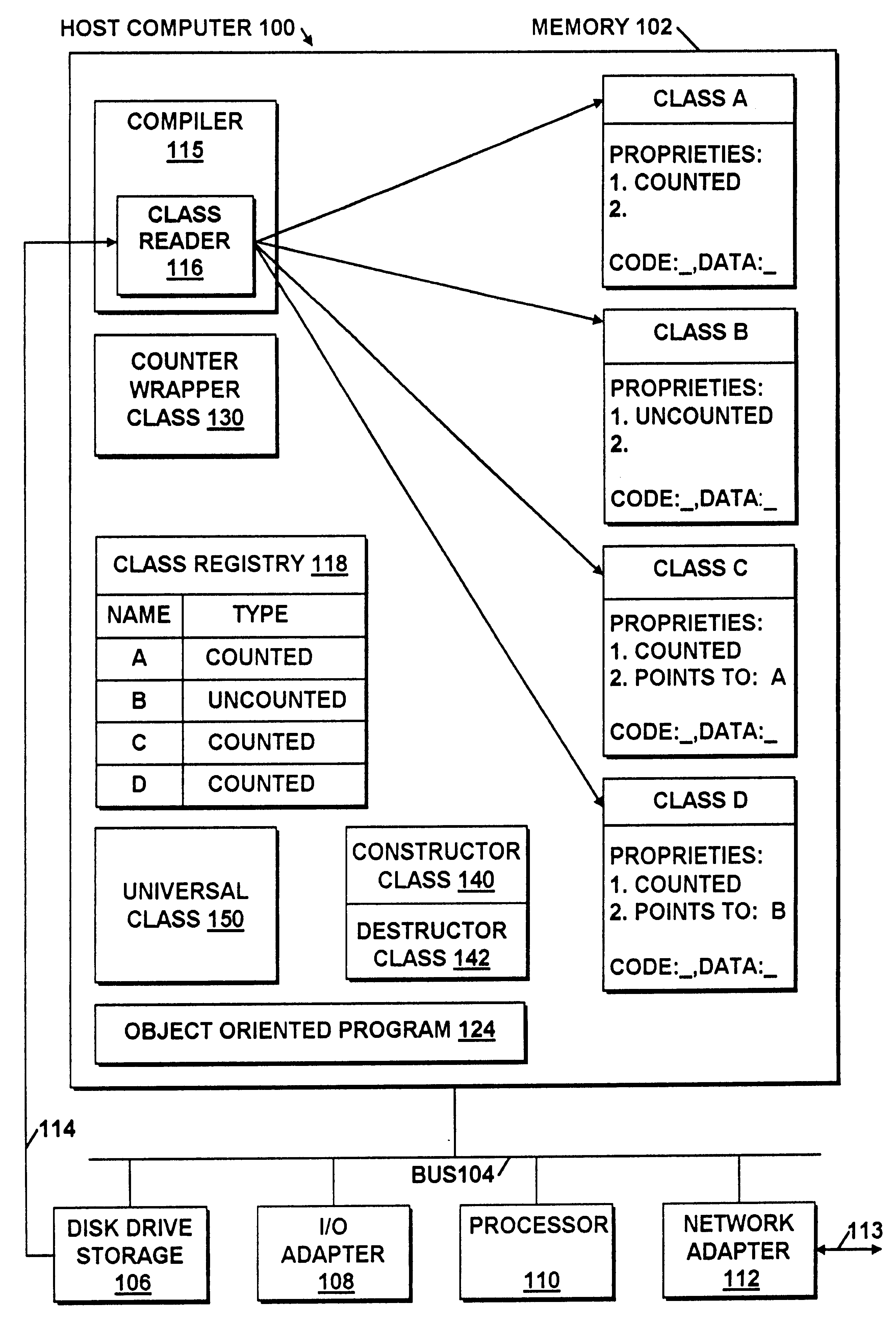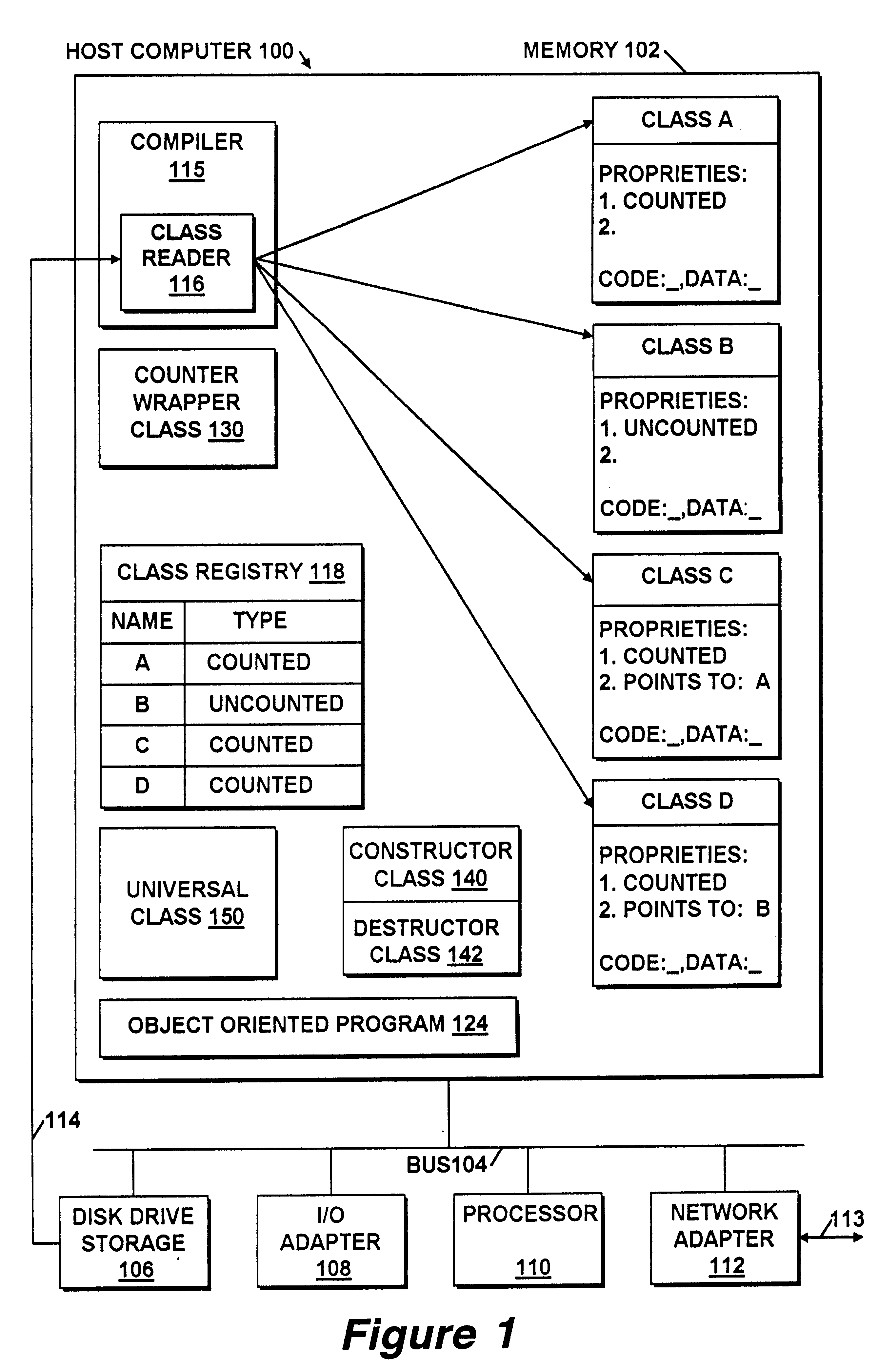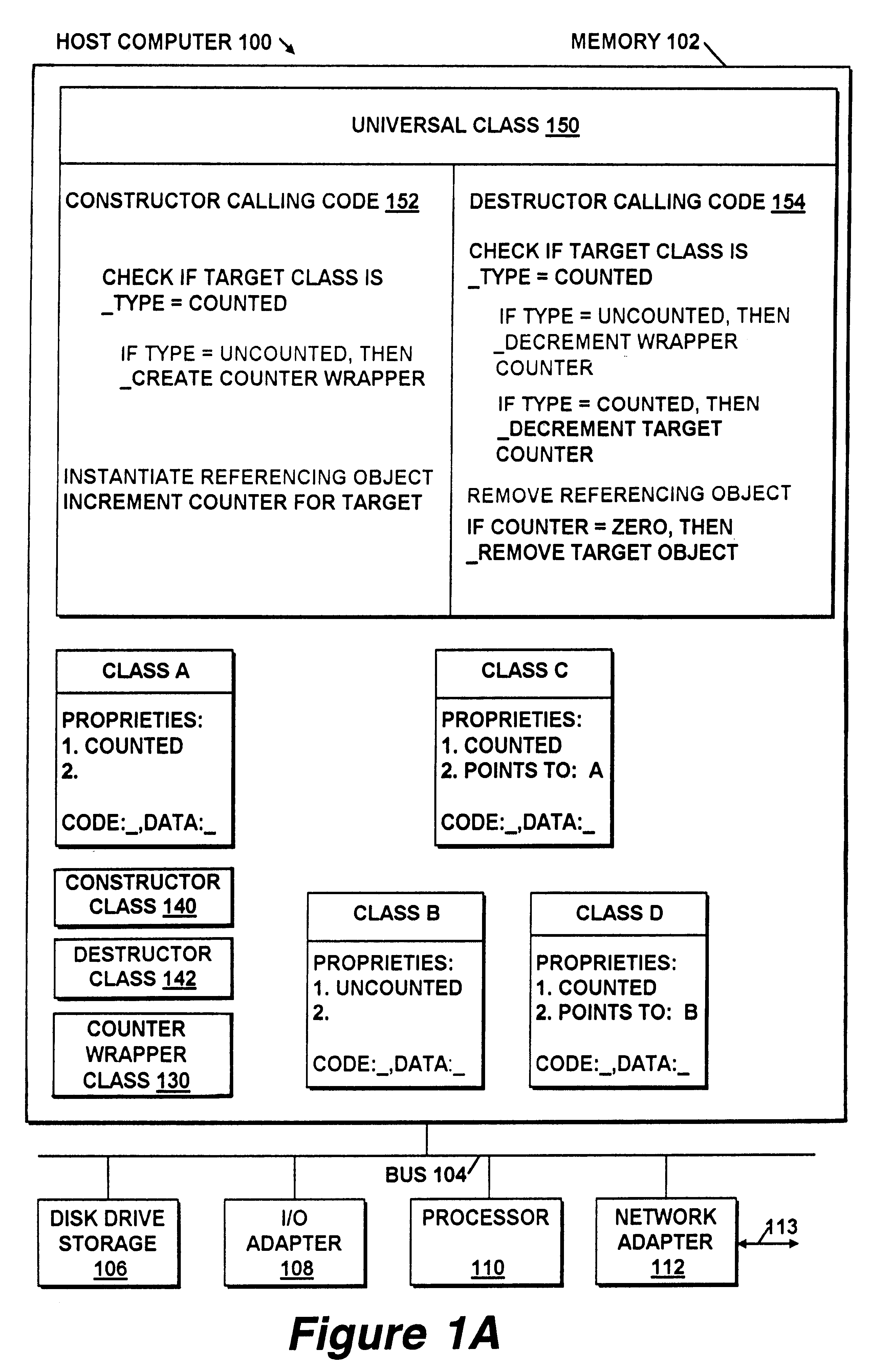Management of reference object lifetimes in object oriented programs
a reference object and object oriented technology, applied in the direction of memory adressing/allocation/relocation, multi-programming arrangements, instruments, etc., can solve the problems of reducing the free memory space available, unnecessarily occupied memory space by objects that are no longer used, and no way provided by the object oriented environment to remove the target obj
- Summary
- Abstract
- Description
- Claims
- Application Information
AI Technical Summary
Problems solved by technology
Method used
Image
Examples
Embodiment Construction
The invention is a mechanism added to the object oriented environment, that monitors objects during their lifetime in the memory. It detects those target objects that do not have an up-down counter destruction feature and then adaptively provides a wrapper for the uncounted objects, the wrapper including an up-down counter destruction feature. A means is provided to determine whether a new target object is from the uncounted object class and, if so, that selectively causes the counter wrapper object to be associated with the new target object. In the first disclosed embodiment described in FIGS. 1 through 5, the detection means is a universal class whose instantiated object performs the detection during the running of the compiled program. In the second disclosed embodiment described in FIGS. 6 through 9, the detection means is a compiler program that performs the detection while the object oriented program is being compiled. The counter wrapper object associated with the new target...
PUM
 Login to View More
Login to View More Abstract
Description
Claims
Application Information
 Login to View More
Login to View More - R&D
- Intellectual Property
- Life Sciences
- Materials
- Tech Scout
- Unparalleled Data Quality
- Higher Quality Content
- 60% Fewer Hallucinations
Browse by: Latest US Patents, China's latest patents, Technical Efficacy Thesaurus, Application Domain, Technology Topic, Popular Technical Reports.
© 2025 PatSnap. All rights reserved.Legal|Privacy policy|Modern Slavery Act Transparency Statement|Sitemap|About US| Contact US: help@patsnap.com



